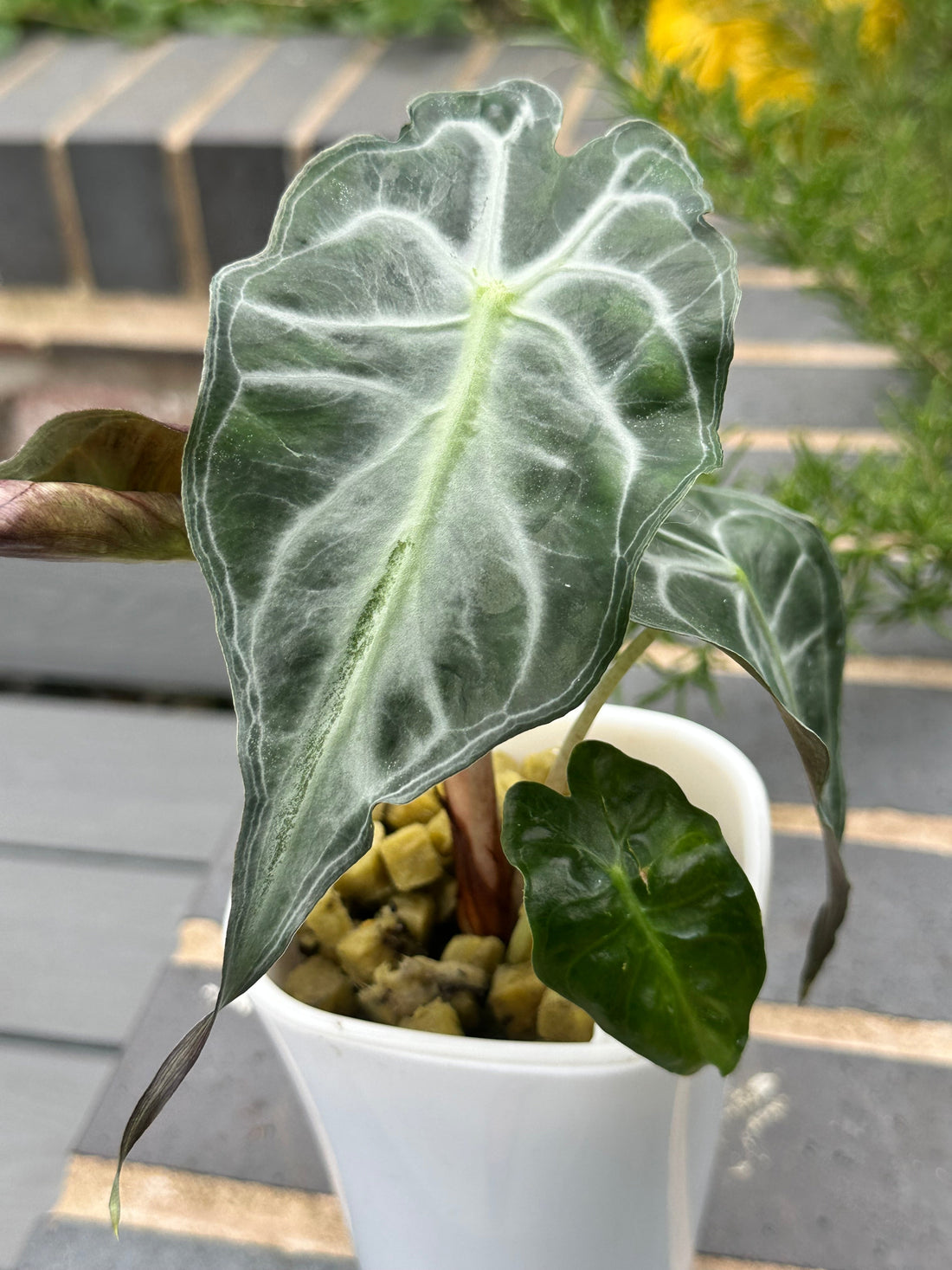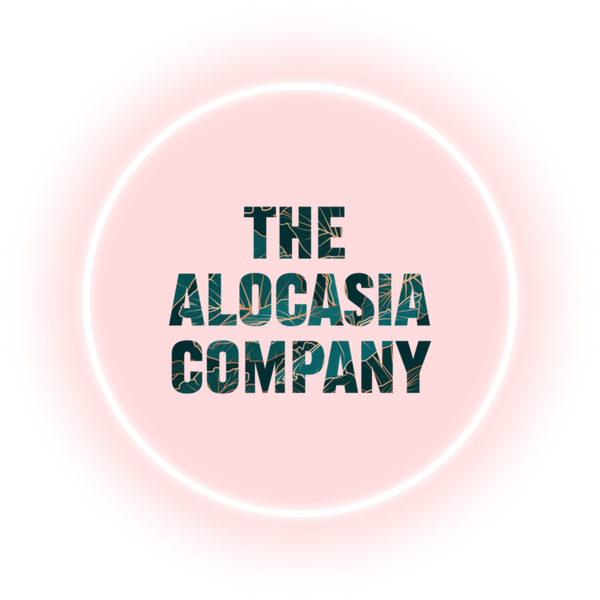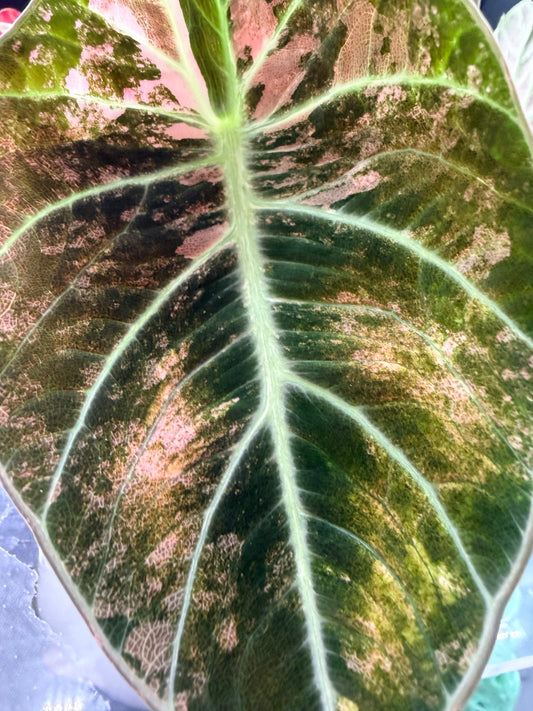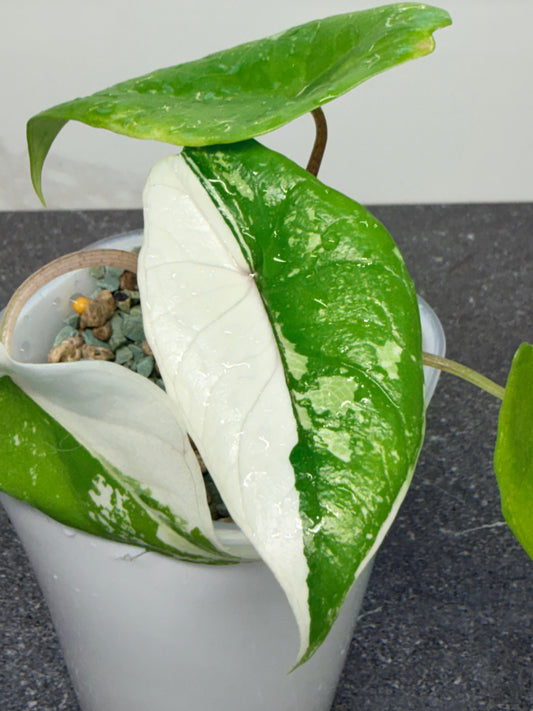
Alocasia 'Venom' The Marvel-Inspired Plant That's Taking Over Collections
Share
Alocasia 'Venom': A Marvel-Inspired Mutant Born from Korean Innovation
In the fascinating world of Alocasia hybrids, few plants capture the imagination quite like Alocasia 'Venom.' This striking mutant, with its distinctive leaf shape reminiscent of the Marvel character it's named after, represents both botanical artistry and the innovative spirit of modern plant breeding. Let's dive into the remarkable story of this unique cultivar and explore the plants that gave it life.
The Discovery: From Mutation to Marvel
Alocasia 'Venom' emerged from the dedicated work of Mason Lee at Mason Plants in South Korea around 2019. What makes this plant particularly special is that it's not a deliberately created hybrid, but rather a spontaneous mutation of the beloved Alocasia 'Amazonica.' Mason Lee, recognising the unique characteristics of this mutation, saw something extraordinary in its leaf shape that reminded him of Venom from the Marvel universe—hence the evocative name.
The path from discovery to commercialisation took several years, with Mason Plants beginning to market Alocasia 'Venom' around 2022. As Mason Lee describes on his Instagram profile, "Venom is a mutant species discovered in Korea five years ago," highlighting both the serendipitous nature of the discovery and the patience required to bring such finds to the broader plant community.
Understanding the Parent Lineage
To truly appreciate Alocasia 'Venom,' we must understand its genetic heritage through its parent, Alocasia 'Amazonica,' which itself is a hybrid of two remarkable species:
Alocasia sanderiana: The Kris Plant
Alocasia sanderiana, commonly known as the kris plant or Sander's alocasia, is endemic to Northern Mindanao in the Philippines and brings dramatic flair to any hybrid. The species is named after botanist Henry Frederick Conrad Sander and is called the kris plant because of the resemblance of its leaf edges to the wavy blade of the kalis sword (also known as kris or keris).
This Philippine native contributes several key characteristics to its offspring:
- Distinctive leaf morphology: Deep glossy dark green to blackish-green leaves, often with large white to yellowish veins and margins
- Structural features: Peltate dark green, white veined leaves interspersed with cataphylls
- Size: Usually growing to a height of 2 ft (60 cm) long with typically a single to a few leaves
Tragically, A. sanderiana is classified as critically endangered in the wild by the International Union for Conservation of Nature, making its preservation through cultivation and hybridization programs even more significant.
Alocasia longiloba 'Watsoniana': The Silver-Veined Giant
The second parent, Alocasia longiloba 'Watsoniana,' represents one of the most historically significant cultivars in the Alocasia world. This is a very old type of plant, believed to be one of the first of its kind to be grown in Europe, introduced in the 1800s by a company called Sander & Co.
'Watsoniana' contributes these remarkable features:
- Impressive scale: Leaves grow up to 60 cm long and wide, making this plant a bold yet refined statement piece
- Striking contrast: Rounded, shield-shaped leaves are accentuated by silver-white veins and edges that contrast against the lush green surface
- Distinctive undersides: The backs of the leaves feature velvety eggplant-purple tones, adding depth and visual interest
- Unique texture: This Alocasia stands out with its leaves that have a bubbly, textured surface, making them quite unique to the touch and appearance
The Amazonica Legacy: A Prolific Parent Line
Alocasia Amazonica is a hybrid from the parents Alocasia longiloba x Alocasia sanderiana that has become one of the most influential crosses in Alocasia breeding. Interestingly, despite its name suggesting South American origins, the plant's birthplace was actually in Miami, Florida, in the 1950s where Salvadore Mauro, a Postman and owner of a now closed plant nursery named "Amazon Nursery," named Alocasia Amazonica in honor of his nursery.
This original cross has proven remarkably productive, spawning numerous cultivars and mutations including:
- Alocasia 'Amazonica' by Salvadore Mauro of Amazon Nursery
- Alocasia 'Balloon Heart' from South Korea
- Alocasia 'Jean Merkel'
- Alocasia 'Mark Campbell' by David Fell of Hawaiian Sunshine Nursery
- Alocasia 'Mortefontanensis' by Édouard-François André
- Alocasia 'Polly' by Bill Rotolante of Silver Krome Gardens
- Alocasia 'Purpley' by Bill Rotolante of Silver Krome Gardens
- And now, Alocasia 'Venom' by Mason Lee
The Science Behind the Success
The remarkable diversity emerging from this single cross can be attributed to the genetic complexity of the parent species. Given the high variability of what literature labeled as Alocasia longiloba, it is not surprising that the results of this cross by multiple hybridizers have produced such different hybrids.
The longiloba complex, in particular, has proven to be a treasure trove for breeders. In the houseplant trade, many of the former species that were subsumed into Alocasia longiloba are now considered types or varieties, these include 'argyrea', 'korthalsii', 'lowii', and 'watsoniana'.
Mason Lee: The Innovative Breeder Behind Venom
Mason Lee has established himself as a significant figure in the Korean plant breeding scene, particularly known for his work with Alocasias. Based in South Korea, Mason Plants has become synonymous with quality and innovation in the aroid world. The discovery and development of Alocasia 'Venom' showcases the careful eye and patience required in plant breeding—recognizing that sometimes the most extraordinary discoveries come not from deliberate crosses, but from spontaneous mutations that occur in nature or cultivation.
Cultural Impact and Naming
The choice to name this mutation 'Venom' after the Marvel character demonstrates the modern intersection of pop culture and horticulture. The plant's leaf shape, with its distinctive lobes and dramatic outline, indeed evokes the flowing, organic forms associated with the symbiotic character. This naming choice also reflects how contemporary plant breeders are connecting with younger audiences and pop culture enthusiasts, bringing fresh energy to the traditional world of plant collecting.
The Future of the Venom Lineage
As Alocasia 'Venom' continues to establish itself in collections worldwide, it represents both an endpoint and a beginning. As the product of a spontaneous mutation, it carries unique genetic characteristics that could potentially be passed on through future breeding programs. While no variegated forms of 'Venom' have been reported yet, the plant breeding community often sees variegated sports emerge from solid green cultivars over time.
Conservation Through Cultivation
The story of Alocasia 'Venom' also highlights an important conservation message. With one of its genetic ancestors, A. sanderiana, critically endangered in the wild, cultivated hybrids like 'Venom' help preserve genetic material and keep these remarkable plant characteristics alive for future generations. Each hybrid carries forward the genetic legacy of its parent species, serving as living repositories of biodiversity.
Conclusion: A Testament to Innovation
Alocasia 'Venom' stands as a testament to the ongoing innovation in plant breeding and the importance of recognizing unique characteristics when they appear. Mason Lee's keen eye and dedication to developing this mutation have given the plant community a truly distinctive addition to the Alocasia family.
From its humble beginnings as a mutation in a Korean greenhouse to its current status as a sought-after collector's plant, Alocasia 'Venom' embodies the intersection of scientific observation, cultural creativity, and horticultural passion. As it continues to grace collections around the world, this Marvel-inspired mutant serves as a reminder that in the plant world, as in comics, sometimes the most extraordinary characters emerge from the most unexpected circumstances.
Whether you're drawn to its unique morphology, its fascinating genetics, or simply its cool name, Alocasia 'Venom' represents everything exciting about modern plant breeding: innovation, creativity, and the endless potential for discovering something truly special in the natural world.
Alocasia 'Venom' continues to be produced by Mason Plants in South Korea, with Mason Lee remaining active in the plant breeding community and continuing his work with Alocasia species and hybrids.




